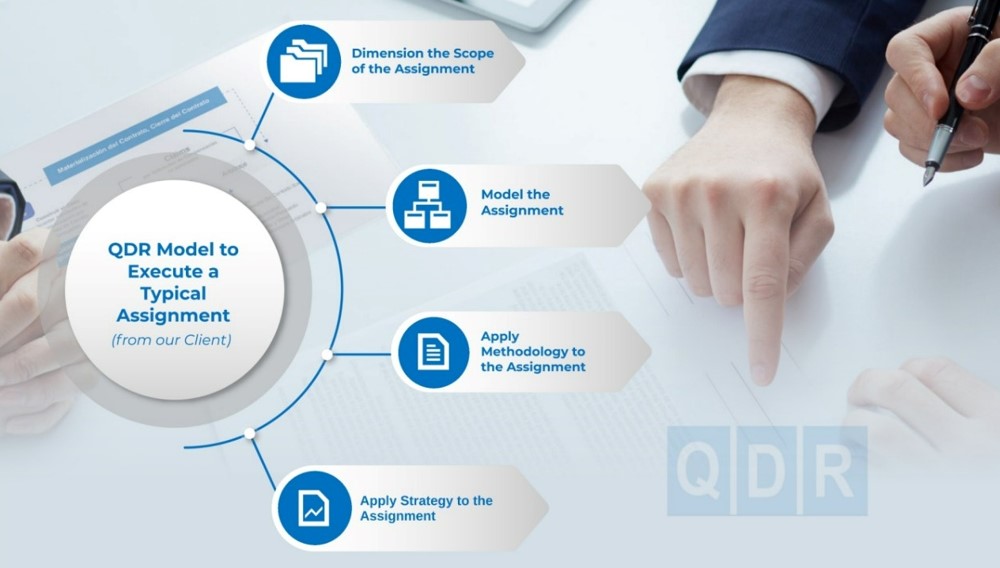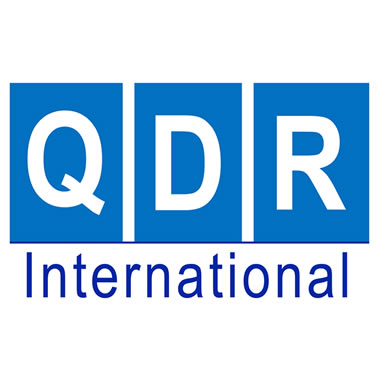Technical-Economic Offer procedure
At the outset of any engagement, QDR works to establish client trust. The following actions summarize how we initiate a collaborative Claims/Expert Witness solution that meets the client’s needs:
- Make a first face-to-face or digital approach, in order to:
- Collect the scope and objectives of the Assignment.
- Achieving a preliminary outline of your requirements.
- That our client designates a valid interlocutor, to deepen the technical aspects of the solution.
- Putting the work in a context and asking the client if they agree with what we understand to be their requirement allows us to guarantee that our approach is consistent with their needs.
- Define very well the model, the methodology, the strategy, the deliverables and documents that are required to execute the work, embodied in a technical offer.
- Collect your comments, observations and agree on Rev. “0” of the technical offer.
- Size the resources and issue the financial offer. The QDR methodology for economic dimensioning for a fixed fee does not require having the contract documents in view, only a list with the type of document and number of pages per document to be reviewed.

Check the detail of the content in the dynamic model here.
These documents allow QDR to set the starting point well, know and understand the contract, its deviations and its management, meaning reviewing, studying and analyzing -at least- the following formal, managed and traceable information, of the documents associated with the Contract:
- Contract final version and Addendums signed by the parties.
- Principal’s Bid Documents, Technical, Administrative and Measurement and Payment Bases, Clarifications, Questions and Answers.
- Contractor’s technical-economic offer.
- Work Break Structure (WBS).
- Organization for the execution of the work (if it is not included in the offer).
- Construction methodology of the works.
- Documents generated during the execution of the works, namely:
- Baseline and Updates Schedules.
- Productivity Indices: Baseline and As-Built.
- Baseline and As-Built Labor, Equipment and Production Histograms.
- Monthly Reports of Programming and Control.
- Payment Statements (valuations) to date.
- Documented description of the activities considered controversial, to measure it in terms of economic compensation or an extension of the completion deadlines, or modification of the milestones included in the contract (claims report).
QDR imprinting: seriousness and diligence in the allocation of efforts in labor and valorization of our services, being a sine qua non condition, prior knowledge of the contract documents, its management in execution and those that evidence the grounds of the Claim/Expert Witness:
- Type of document and number of pages by document to review. QDR has defined time ratios (Hh/page) by type of document to be analyzed (a contract, has a ratio other than an administrative basis or contractual letters, etc.): the product of the number of pages times the ratio, make up the Hh of each activity to review/analyze.
- The number of pre-reports and reports to be made. QDR adopts and adapts to each case, the typical standard of the best international reporting practices (Mh/pag).
Technical-Economic Offer procedure
HeadQuarters
1007 N. Orange St. 4th Floor
Wilmington, DE 19801
+1 267 679 6065
contacto@qdrclaims.com
Copyright © 2015 Asesorías, Consultorías y Servicios QDRclaims SpA. The information contained in this site is the property of QDRclaims, and its reproduction will be allowed whenever the source is cited.
